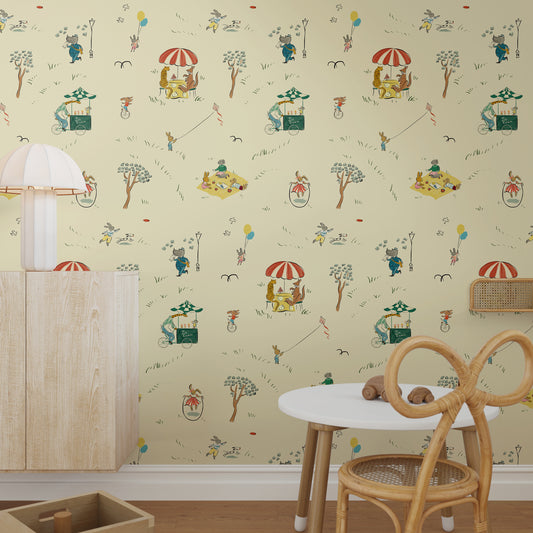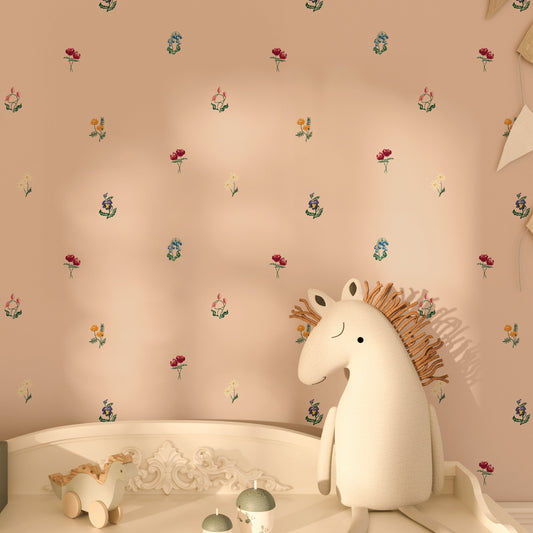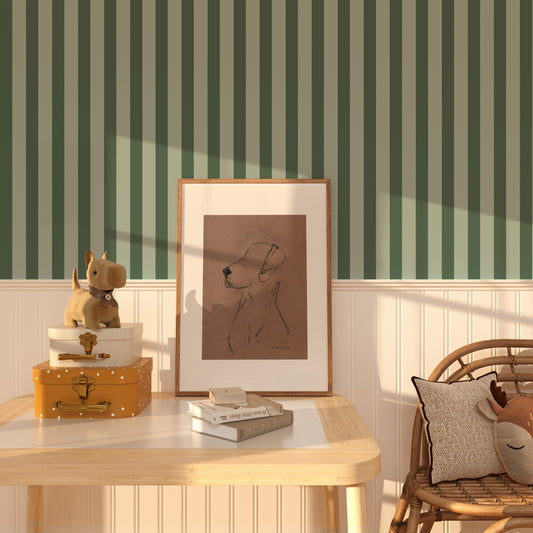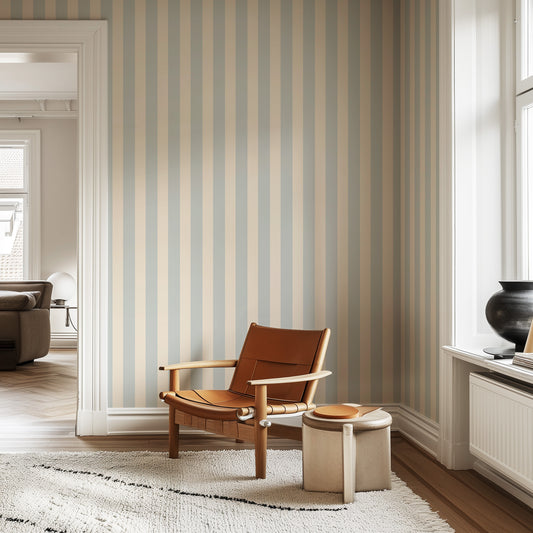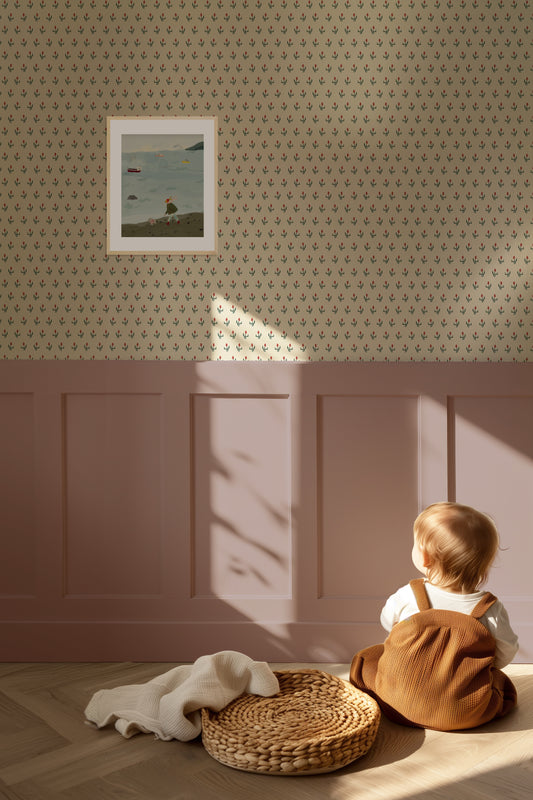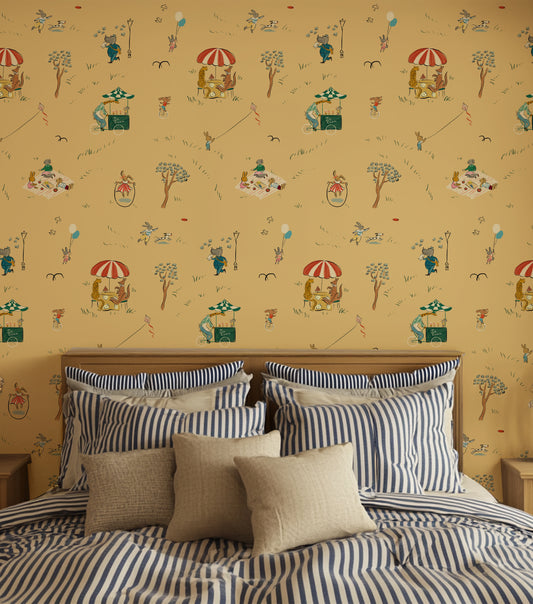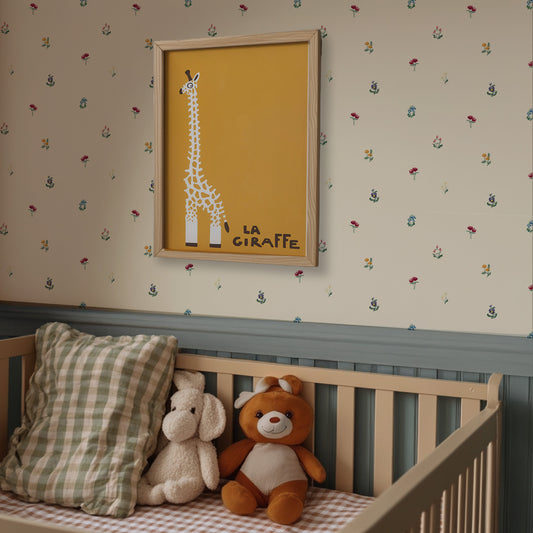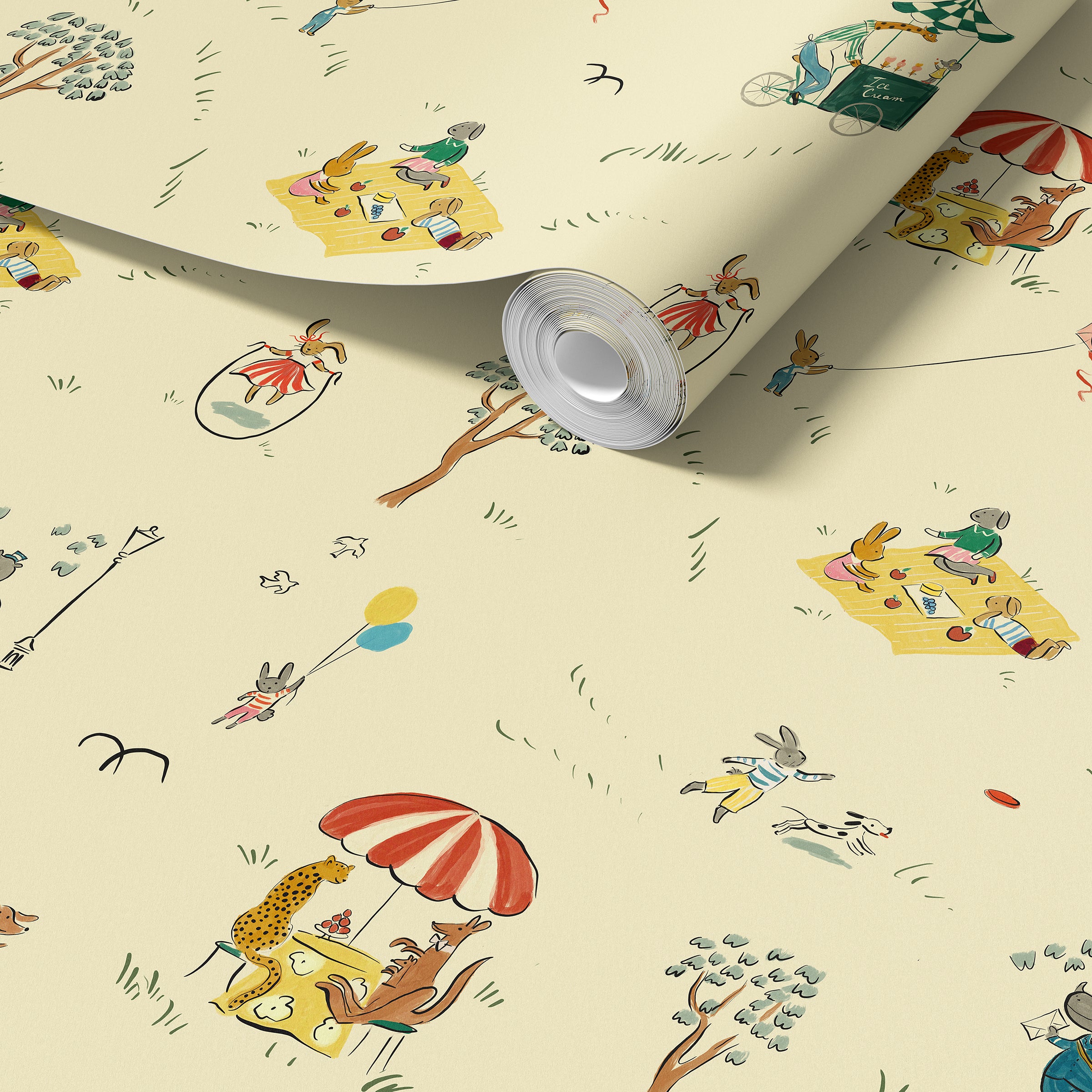
PRE-PASTED WALLPAPER INSTALLATION
Our pre-pasted wallpaper has a built in adhesive backing that activates with water. It’s a great balance between convenience and durability, and usually removes in full sheets when you’re ready for a refresh. Pre-pasted wallpaper is DIY-friendly with some patience and attention to detail. Follow the below instructions for a seamless application.
HOW TO INSTALL PRE-PASTED WALLPAPER
Before you begin
Tools you'll need:
- Spray bottle filled with water
- Clean water and sponge or wallpaper brush
- Level and a pencil
- Step stool or step ladder
- Straight edge or ruler
- Sharp blade or utility knife
- Rags or towels + drop cloth or plastic sheeting
- Smoothing tool (squeegee or wallpaper brush)
Installation is best done together with someone - it's easier and more fun that way!
After receiving the wallpaper, take it out from the original packaging and unroll the panels. It must remain in this state for at least 48 hours.
Take a final look to make sure the walls are smooth. Textured walls will make it more difficult for the wallpaper to adhere.
Do not apply if your walls have: unpainted drywall, cracking paint, humidity spots, knockdown, orange peel, or popcorn texture. If any of these describe your walls, please make sure to fill holes and sand bumps so the wall is smooth. We do not recommend applying on glossy walls (only matte / semi-matte) or on top of already applied wallpapers.
Freshly painted and primed walls must dry for 7 days before installing the wallpaper.
Step 1
Prep your walls
First, remove your outlet covers, light switches, register covers, etc.
Next, use a wet cloth or sponge to clean the surface with warm water and mild soap. Don't use strong chemical cleaning products or the wallpaper may not stick well to the wall. Let the walls dry for 24 hours.
Surfaces not recommended for installation: Highly textured walls, multicolored walls, on top of already wallpapered walls, brick/cinderblock, unpainted drywall/sheetrock, on cracking paint, humidity spots, orange peel, popcorn texture, or outdoor areas.
Step 2
Map it out
Unroll your wallpaper panels and lay them flat, allowing the panels to uncurl over a 48 hour period. During this time the wallpaper will adapt to new environmental and climatic conditions.
Identify where your panels will be placed within the room. Make sure you have enough wallpaper to cover your area. If you have a mural type wallpaper, numbers on the sheets will form a sequence for placement.
Step 3
Apply the wallpaper
1. Before applying, use a level and a straight edge to draw a straight vertical line on the wall where you want to start application.
2. Activate the paste: Activate the wallpaper paste by wetting the back of the wallpaper. You can use a damp sponge or wallpaper brush to wet the paste side. Alternatively, you can use your spray bottle filled with water, and spray the back of your wallpaper. Smooth over the entire surface with a cloth and let sit for 10-15 seconds. Be careful not to oversaturate.
Fold the wet wallpaper loosely, paste side to paste side, aligning the top and bottom edges. This allows the paste to activate without drying out. Leave the folded wallpaper in this "book" for 1 additional full minute. This step helps the paste fully activate and the paper to expand.
3. Remember to stick the edge of the first sheet exactly to your drawn line. Every next sheet will depend on the accuracy of the first one.
4. Unfold the top portion of the booked wallpaper and align it with the top of the wall, leaving some excess paper at the top and sides. Use a level to ensure the wallpaper is straight. Press the top of the wallpaper against the wall to hold it in place.
5. Straighten out the air bubbles from the center of the wallpaper to the edges using your smoothing tool. Start from the center and work your way out, ensuring there are no air pockets trapped underneath.
6. Slowly unfold the rest of the wallpaper while continuing to smooth against the wall with the smoothing tool. Hang the second panel to the right of the first panel. Make sure the artwork aligns from the top of the wall downwards.
7. The wallpaper panels should be hung edge to edge without any overlapping. Gently and evenly press the panels together to ensure no visible seams.
8. Repeat these steps until you are finished!
Step 4
Trim the excess
1. After all the wallpaper is applied, use the smoothing tool to gently press along the seams and edges. This will ensure a seamless appearance and help any remaining bubbles escape.
2. Use a damp sponge or clean water to remove any excess paste that may seep out.
3. Once you’ve applied and smoothed all strips, use your straight edge and a sharp blade to trim excess wallpaper on the top and bottom of your wall, around windows and doorframes. Do not use dull scissors or blades. Make precise cuts to achieve clean edges.
4. Allow the wallpaper to dry completely. This can take several hours.
Enjoy your new room!

Best Sellers
-
Parks Wallpaper, Cream
5.0 / 5.0
(3) 3 total reviews
Regular price From $8.00 USDRegular priceUnit price / per -
Lucy, Rosebud
Regular price From $8.00 USDRegular priceUnit price / per -
Perfect Stripe, Green
5.0 / 5.0
(1) 1 total reviews
Regular price From $8.00 USDRegular priceUnit price / per -
Parks Wallpaper, Blush Pink
5.0 / 5.0
(1) 1 total reviews
Regular price From $8.00 USDRegular priceUnit price / per -
Perfect Stripe, Light Blue
Regular price From $8.00 USDRegular priceUnit price / per -
Painterly Tulip
5.0 / 5.0
(1) 1 total reviews
Regular price From $8.00 USDRegular priceUnit price / per -
Parks Wallpaper, Dandelion Yellow
3.0 / 5.0
(1) 1 total reviews
Regular price From $8.00 USDRegular priceUnit price / per -
Lucy, Bone
Regular price From $8.00 USDRegular priceUnit price / per


